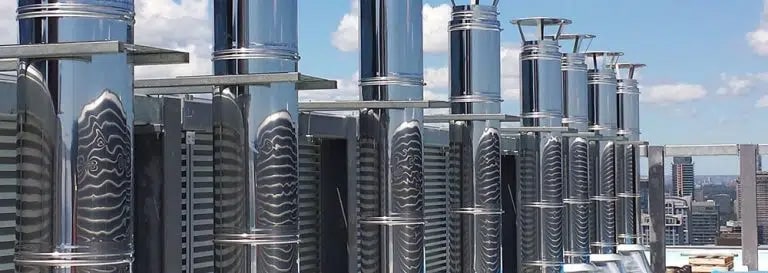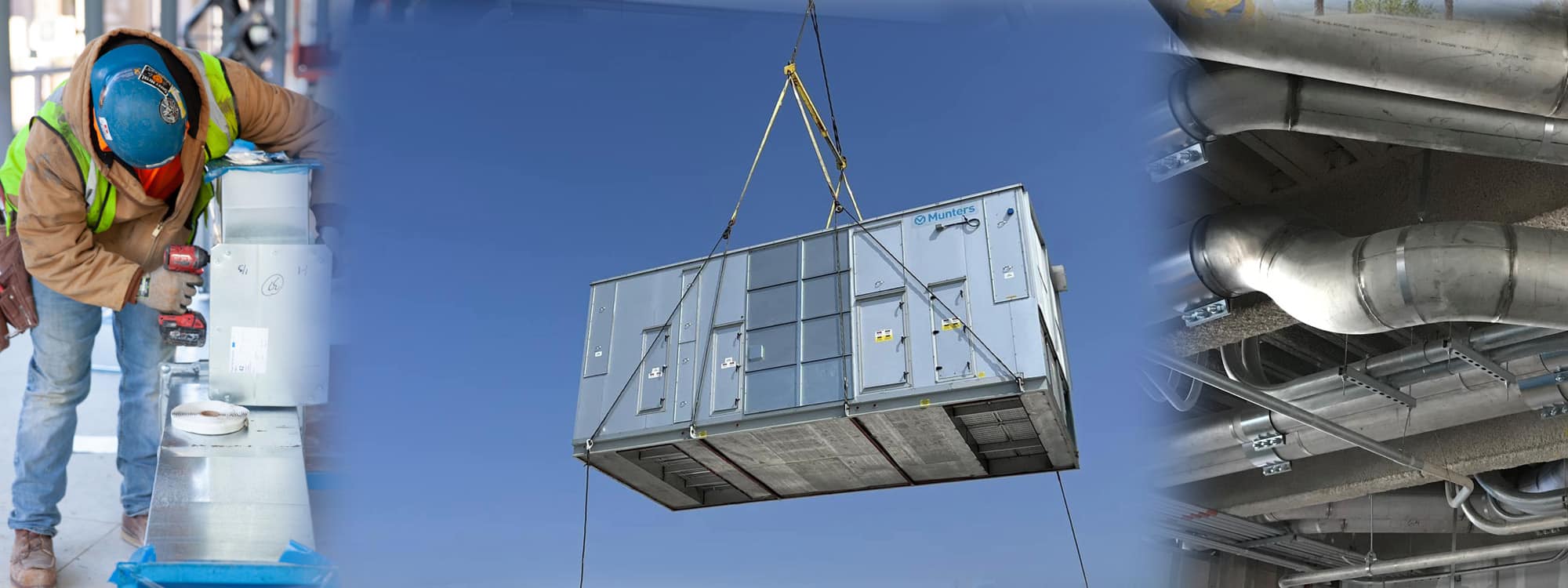
HVAC stands for heating, ventilation, and air conditioning.
Sheet metal workers fabricate and install ductwork for air handling systems. This can include spiral seam pipe air-conditioning and ventilation systems, shielded rooms to keep out sound or magnetism, and ducting for computer rooms where humidity and temperature control are essential. In addition to ductwork, sheet metal workers fabricate and install coping and flashing, filing cabinets and desks, kitchen equipment, metal roofs, siding, rain gutters, downspouts, skylights, customized precision equipment, and many other products made from metal sheets. The process of sheet metal work involves shearing, forming, fabricating, welding, soldering, and assembling a host of items made from galvanized iron, steel, copper, nickel alloy, stainless steel, aluminum and sometimes plastic. The work takes place on industrial, commercial, and institutional construction sites, industrial plants, and in the electrical power systems sector of the construction industry.
Shop work may involve setting up and operating fabricating machines to cut, bend and straighten sheet metal, shaping metal over anvils, blocks or forms using a hammer; operating soldering and welding equipment to join sheet metal parts, or inspecting, assembling, and smoothing seams and joints of burred surfaces.
Our members work on high-volume mechanical systems. These systems deliver heated and cooled air to commercial buildings such as schools, hospitals, airports, factories, and office buildings. These projects enhance the quality of life and safe breathing for people from across every walk of life.
Some of the responsibilities of a sheet metal worker include (but are not limited to):
- Reading blueprints and specifications
- Layout and fabrication
- Installation of HVAC (Heating, Ventilation, Air Conditioning) systems
- Altering existing systems
